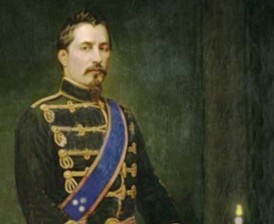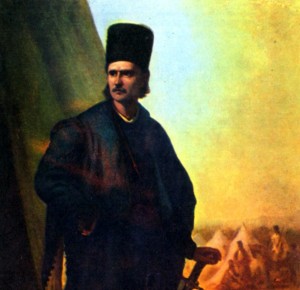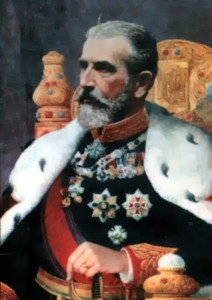Making of Romania: the 18th and 19th centuries – unification, first foreign king


Romanians have always dreamed of being independent and staying united, but they were rarely left in peace for long enough to develop a sense of their own identity. This short overview of the history of Romania will give you an idea about the events that took place in the 18th and 19th centuries and which shaped the idea of a national identity in the Romanians' consciousness.
By Alexandra Fodor
The 18th century witnessed the decline of the Ottoman Empire and the rise of the Russian and Austrian ones. The Ottoman Empire, seeking to defend its old position, introduced in Moldavia (1711) and in the Romanian Country (1716) “the phanariot rule” (until 1821). The name comes from Phanar, a quarter of Constantinople, from which the Turks used to appoint Greek rulers in the two principalities. These rulers were seen as more loyal than local Romanian ones. During this time the ottoman political control and the economic exploitation has increased and corruption has spread. Fiscal exploitation, the Ottoman Empire's intervention in the Principalities’ internal affairs and its monopoly over their foreign policy, the deterioration of the two countries’ armies, and the decline in the political autonomy of the Romanian provinces were the main characteristics of the Phanariot regime.

1821 was the year of a revolutionary national and social movement in Moldavia and the Romanian Country (Tara Romaneasca) against the Ottoman Empire’s domination in the two principalities. The 1821 revolution led by the Romanian boyar Tudor Vladimirescu marked the end of the Ottoman domination. Following the Revolution, the Sultan stopped appointing Phanariot Greeks as rulers in Moldavia and the Romanian Country.
The main aim of the 1848 Romanian revolution was to unite the Romanian Principalities. The 1848 revolution also targeted the abolition of the boyars’ privileges, civic and political rights, freedom of speech and of the press, and the creation of a national army. The Paris Treaty (1856) stated the autonomy of the Romanian Principalities, which paved the way to setting up of the modern Romanian state.
In 1857, the “Ad-hoc Assemblies” voted to create a union of the two Principalities and in 1859 Alexandru Ioan Cuza was elected Prince in both Moldavia and the Romanian Country. He is well known for initiating important social and political reforms such as: the law for seizing monastery assets (1863), the Penal Code law, the Civilian Code law (1864), the education law (primary school became compulsory and free in 1864). But Cuza’s reforms were not accepted by the boyars who forced him to abdicate (1866).
In 1866, two significant events for Romania’s modern political development occured: the Romanian throne was given to a foreign prince who gave the country prestige and political support, and the birth of the first modern constitution, which was inspired by the Belgian one. On May 10, 1866, Carol of Hohenzollern-Sigmaringen, a relative of the royal family of Prussia, was proclaimed ruling prince of Romania, with the name of Carol I.

In 1878, the Romanian independence was internationally recognized at the Peace Congress in Berlin. In March 1881, Romania proclaimed itself a kingdom and Carol I was crowned King of Romania.
Among the most important buildings dating back to that period it's important to mention the Royal Palace, the Brukenthal Palace, the Mogosoaia Palace, the Stirbei Palace.
The Royal Palace is located on Calea Victoriei, in the Revolution Square. It was built between 1812 and1815 by Dinicu Golescu. In 1859 it was the residence of Prince Alexandru Ioan Cuza. It currently houses the National Art Museum.
The Brukenthal Palace is located in Sibiu and is one of the most important monuments from the 18th century. It was built between 1778 and 1788 as the residence of the Baron Samuel von Brukenthal, governor of Transylvania in 1777-1787. The Brukenthal Palace houses the Art Gallery and the Brukenthal Library . This was one of the first art museums in Europe.
The Mogosoaia Palace can be found at 15 km from Bucharest in Mogosoaia locality, Ilfov County. It was built in 1702 by orders of Prince Constantin Brancoveanu and it hosted the Prince’s summer residence. Presently the Palace houses the Medieval Art Museum, which displays sculptures in stone, silvering, icons and rare printing works.
Stirbei Palace is situated on Victoriei Street. The palace built between 1833 and1835 is an elegant building decorated with Greek architectural elements (columns, caryatids). It was the private residence of Prince Barbu Stirbei.
alex@romania-insider.com















